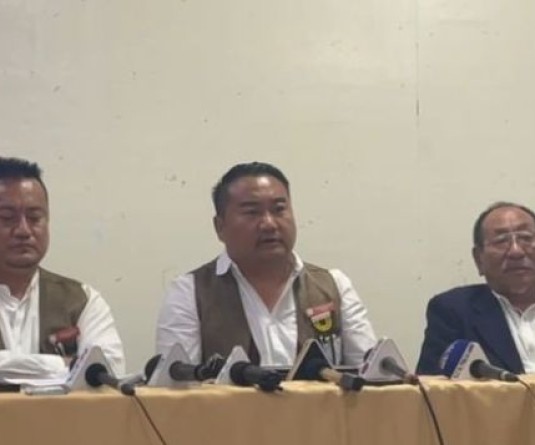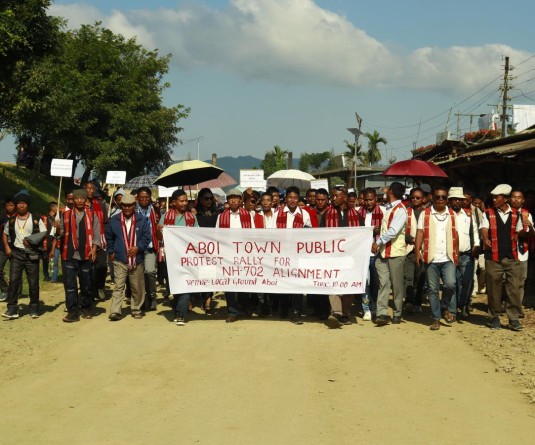
Dimapur, June 28 (MExN): While the Naga resistance movement began with the British in 1832 when the British Emperor tried to take control of the Naga territory, its political conflict with India began only in 1947 when Prime Minister Jawaharlal Nehru refused to honour the Naga Declaration of Independence on the August 14, 1947, the NSCN (IM) stated on Monday.
Affirming the statement, “The political conflict is about six decades old...” in the Framework Agreement (FA), which had come under criticism from the Working Committee, Naga National Political Groups (WC, NNPGs), the NSCN (IM) said that the movement in the British era was not connected to Indo-Naga political struggle. “India at that point of time was yet to be organized as a compact nation. Many princely states with independent status of their own were the norms of those days. It was, therefore, wrong of sorts to give misplaced historical chronology that is not connected to Indo-Naga political struggle,” the NSCN (M) stated in a press release issued through its MIP.
Stating that the Naga political conflict with India began only in 1947 when it’s Declaration of Independence was refused, it said that “painful account of history” in the years that followed was duly acknowledged by the Government of India (GoI) when the Framework Agreement (FA) was discussed and signed. It added that the line: “The political conflict is about six decades old” was absorbed in the official document.
The nature of the Indo-Naga political history, it said, cannot be changed at the whims of anybody under any given circumstances simply to suit misplaced narrative. “Going back into the early stage of Naga political struggle and carried this far, the Naga political struggle is not confined to the geographical area of the Indian state of Nagaland. It is widespread all over Nagalim and the solution will also encompass all the Naga areas,” it asserted. This geographical coverage of Naga political solution is being seriously discussed in the Indo-Naga political talks pending final decision, it added.
The NSCN (IM) stated that the suffering of the Naga people is deeply rooted in the stubborn approach of Nehru as he denied the Nagas their legitimate political right and the Nagas were “compelled to resist Indian suppression through military means” for more than six decades.
However, it said that a time came “when the Indian military Generals acknowledged that military solution is not possible; the Naga issue is a political one requiring a political solution.” This, the NSCN (IM) stated, “prompted the then Prime Minister of India PV Narasimha Rao to approach the NSCN Collective Leadership abroad in 1995 for peace talks to start.” The Framework Agreement was signed on August 3, 2015.
The NSCN (IM) charged Interlocutor RN Ravi of hijacking “a few important points of the Indo-Naga political negotiations and framed it into the so-called Agreed Position.” Terming it as “the beginning of the downfall of Ravi’s credibility in the eyes of NSCN Talk Team,” it claimed that Ravi, desperate to destroy the Naga political issue, promoted “NNPGs to counterweigh the NSCN and settle the Naga political issue under the Indian Constitution.”
“But the fact remains that the Indian constitutional process to solve the Naga political issue under the 9 Points Agreement, 16 Points agreement and Shillong Accord has ended in disaster. The irony is that what has failed in the past will not stand the test of time as NSCN’s political stand for honourable solution has withstood the test of time. NSCN shall stand the ground come what may,” it asserted.
The NSCN (IM) said it was “being cautious not to be cheated and flattered again” by post solution formulae as propagated by the GoI. What are not included in the present scheme of solution will never see the light in the future, it maintained.
It said, “those who have succumbed to the crafty designs of the GoI to bring Naga solution under the constitution of India should not harp on the past historical milestones like the Naga Plebiscite which represents the passion of the Nagas to be free people with their own political identity.” This, the NSCN (IM) is symbolised by the Naga national flag and Yehzabo (Constitution).
The NSCN (IM) stated that it abhorred accepting economic package as a part of the Naga solution and that it was not gullible enough to take the bait. “Unfortunately, this is the state of affairs with other Naga political groups who professed to be fighting for the Naga political freedom,” it added.
“Significantly, the political wisdom invested by both the GoI and NSCN in signing the Framework Agreement should be pushed forward to take the Naga political issue to conclusive settlement. There is no other way forward,” the NSCN (IM) asserted.





